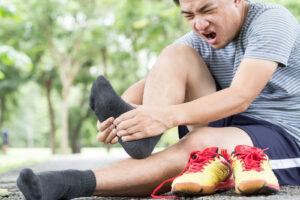It’s show time!
Dancing classes have started for most dance schools across Melbourne for 2018. Some schools may even have events or competitions nearing for the first term. That break over the summer months may have you or your child excited for the year ahead! However, with any sport there is always the potential for injuries to occur, and dancing is no different!
Children and adults who partake in any form of dancing, no matter how long they have been training are always at risk of an injury. Factors such as technique, fatigue and muscle strength in addition with footwear and each individual’s biomechanics can affect the potential for injury to occur.
Pressures applied by the style of footwear and movements such as pivoting, releves, shuffles, wings and landings can be the causes of callus, corns, ingrown toenails, blisters and fungal infections.
So…..here are a few tips and tricks to help you or your child to be pain free and have a great start to the dancing year a head!
- Any pains of the toes, ankles, heels or lower and upper legs should be immediately assessed by a health practitioner such as a podiatrist or physiotherapist. Any immediate, acute or lingering injuries should be assessed as soon as possible to avoid further trauma and a faster pathway to recovery.Things to look for: Swelling, redness, bruising, reduced movement or pain on movement, pain while weight bearing and non-weight bearing.
- Replacing worn or broken shoes. At the start of the year is a common time for dancers tp be purchasing new shoes. However, just before an event is NOT the time to purchase new footwear as things can go wrong with little time to fix them. Dance shoes need to be worn in to ensure any areas of rubbing, size, style and faults with the shoe are noted and can be fixed. We advised that all shoes are fitted by a professional at a dance store with extensive knowledge in brands, fit, wearing and accessories.Things to looks for: Areas of rubbing. Loose buckles, elastic or ribbons. Slipping out of shoes. Incorrect fit-too small or too big.
- Treating any corns, callus, blisters or ingrown toenails. Visiting a podiatrist will dramatically help with the general health of the feet. Repetitive movements and increased wearing of tight and narrow dance shoes can quickly affect skin and nail progression.Things to look for: Any parts of the foot that are red, itchy, hot, sore or swollen. Ingrown nails. Thick areas of skin. Hard central areas of skin. Macerated and soft areas of skin. Weeping areas of skin.
- Damaged/Loose nails. If any nails are becoming loose or are bruised contact your podiatrist as soon as possible. If able (and not allergic) dress the toe with betadine and a bandaid daily until healed. Do not pull the nail off as this will cause more of an issue.Things to look for: Redness and general swelling of the toe. Pus. Any odours. Pain when pressure is applied. If all of the above the toe may be infected, contact your GP ASAP as you may require antibiotics.
- Protecting your toes. Pressure from footwear and different styles of dance impact on the forefoot and toes in particular. Your Podiatrist will be able to provide your with a range of devices that you can slip over or in between your toes to reduce direct pressure and decreased overall pain and discomfort.We hope your feet keep you happy, on your toes and dancing your way through and amazng 2018. If you have any questions don’t hesitate to contact us!
Chookas and Good Luck……….no broken legs here ……
Alice Gofron- keeping you happy, healthy and connected 🙂
